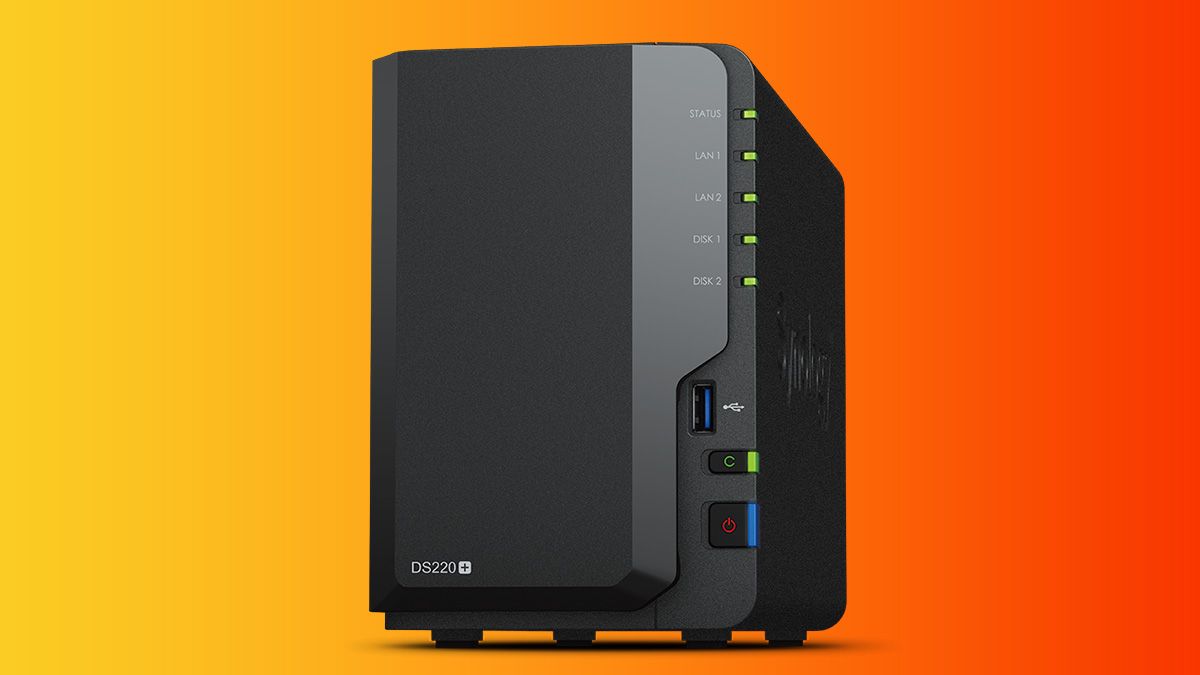
The best options for your NAS
If you’ve just picked up a Synology enclosure or are looking to make the most of your existing one, there is a bunch of apps you should know about – some of these can save you a few tenners. However, because Synology has made so many apps, figuring the best ones are a bit of a challenge. But worry not: we’ve broken down what Synology’s various apps have to offer and whether they’re any good. We’ve also gathered a few third-party integrations that work well with Synology.
1) Synology Photos
In an alternate universe, Synology Photos could be Google Photos. The two are eerily similar, with Google Photos just a few steps ahead. Both group photos by faces, offer a decently-powerful search experience, and have a similar user interface. Synology, however, lacks editing tools. The upshot is you won’t need to a monthly subscription fee with Synology, since all your media is stored on your very own NAS. We even tried out the service when Google Photos stopped unlimited free storage and were satisfied with the experience.
2) DS video
If you’ve got hard drives packed with movies and TV shows, DS video will let you stream them on your mobile or laptop anywhere you want. The interface is simple (maybe too simple) to follow and allows you to sort and group your collection. It can also fetch information such as film covers, actors, and episode titles for your existing media collection. However, if you’re looking for more functionality, you might want to check out Plex–more on this below.
3) DS audio
The death of Google Play Music might’ve been bad news for you, but if you’ve got a NAS you can access all your audio files on the go with the help of DS audio. Granted, it looks nowhere close to some popular streaming services, but you needn’t pay to listen to high-quality audio on the go. You can even download music for offline playback on your phone.
4) DS note
DS note lets you jot down notes or to-do lists that you can access from anywhere. However, given the nature of notes and just how less storage they end up taking, you’re better off using alternatives like Evernote, Google Keep, or Bundled Notes that are feature-rich and don’t look like they were made in 2015.
5) Synology Drive
Synology Drive is a must-have because it lets you access files and media located in My Drive (homesuseridDrive), as long as you’re connected to the internet. You can not only download and upload files using the app but also open documents and spreadsheets and share them with other users. There’s also an option to save files for offline access, but unfortunately you’ll have to select individual files as you can’t offload an entire folder at once. There are PC/Mac apps available too that can sync folders to the NAS.
6) DS file
DS file is not as sleek or new as Synology Drive–the interface should speak for itself–but it does allow access to all files unlike its younger sibling. If you don’t want to install Photos or Drive apps on your NAS, DS File has you covered because it gives you access to everything and even offers camera sync.
7) DS cam
Security cameras are relatively cheap nowadays, but most companies like Wyze and Nest require you to pay a monthly subscription to store recordings in the cloud. If you own a Synology NAS and a compatible smart camera though, you can store to your heart’s hard disk’s content. DS cam lets you watch the live feed of these cameras, playback recordings, and even manage these cameras on the fly.
8) Synology LiveCam
If an old phone is collecting dust but works fine, you can turn it into a security camera with the help of Synology LiveCam – we tried it! Simply install the application, and connect the phone to your NAS via Surveillance Station. Keep in mind, that you’ll require a camera license if you have more than two cameras in your system, and they’re expensive.
9) DS finder
If you’re looking to set up a Synology NAS without a computer or laptop, the DS finder app will rescue you. It can install DiskStation Manager on your drive as long as your phone is connected to the same Wi-Fi network. You can also use it to manage your NAS and receive notifications.
10) Synology MailPlus
If you’re looking for privacy-focused alternatives to Gmail or Outlook, Synology lets you host your own mail server which ensures that you have complete control over the data. The MailPlus app lets you access your mails on the go but it’s surely not as feature-rich as mainstream services. Unless you really want to host your own mail server without really paying for it, you probably won’t need this app/
11) Synology Chat
This is an app you most likely should skip unless you’re making use of the email client Synology has to offer and a bunch of people using the service. As the name suggests, it’s an instant messaging service that runs on your NAS and can be accessed on your laptop, mobile, or desktop.
12) Synology Active Insight
Active Insight is built to enable remote health monitoring of your NAS. You can check current and past performance, CPU load, memory consumption, and IOPS in easy-to-understand graphs and dashboards. The app can also notify you of system alerts and provide detailed troubleshooting steps in case something goes wrong.
13) DS get
DS get is your companion if you want to manage downloads on your NAS remotely. You can view the download status and speeds, control download schedules, and even start downloads using the built-in browser. Unfortunately, for those who care, the app doesn’t provide any information on how many seeds and peers you are connected to.
14) Synology Secure SignIn
You can never be too careful with your data, and if it’s your NAS we’re talking about, you shouldn’t be taking any chances. Secure SignIn as the name might suggest, is a 2FA app that can authenticate DSM login requests. That’s not all, if you wish, you can configure it to work with just about any service that supports 2FA apps.
DS cloud, DS photo, and Synology Moments are deprecated apps and have been replaced by newer apps mentioned in the list above.
Over and above the first-party apps mentioned above, you can get a lot more done on your NAS with some first and third-party integrations. While it’s not possible to cover all of them, here are a few to get you started:
Plex
Plex allows you to access your entertainment collection anywhere, you should definitely try it out if you have a collection of music or movies on your NAS. It helps organize your titles in a coherent way and even automatically fetches all relevant information like posters, actors, synopsis, and more. Keep in mind that you’ll have to pay to stream your own collection anywhere, but the convenience offered is unquestionable. You can get the package for your NAS right here.
WordPress
Yes, you can host your very own blog or business website on your Synology NAS. The process is not straightforward and managing the server can be a time-consuming process, but you’ll surely be able to save some money and make the most of the available resources on your NAS.
TeamViewer
Synology does offer a way to remotely access your NAS, but it also supports TeamViewer which you’re probably already used to. The setup process is easy to follow and once set up, you’ll be able to view and manage the system even with your phone.
Active Backup by Synology
Losing access to an account with important data is what nightmares are made of, and for some unfortunate ones, it’s been a reality too. It’s always a great idea to have an offline backup of your data in the cloud and Active Backup for Google Workspace and Microsoft 365 automates this process for you, without any additional cost. This isn’t a third-party integration as it’s offered by Synology,
Hopefully, by now, you have an idea of all that your NAS is capable of and the apps and integrations you need to make the most of it. If you’re unfamiliar with NAS stystems, you’ll want to check out why Synology is a good option for Android users.
Read Next
About The Author

